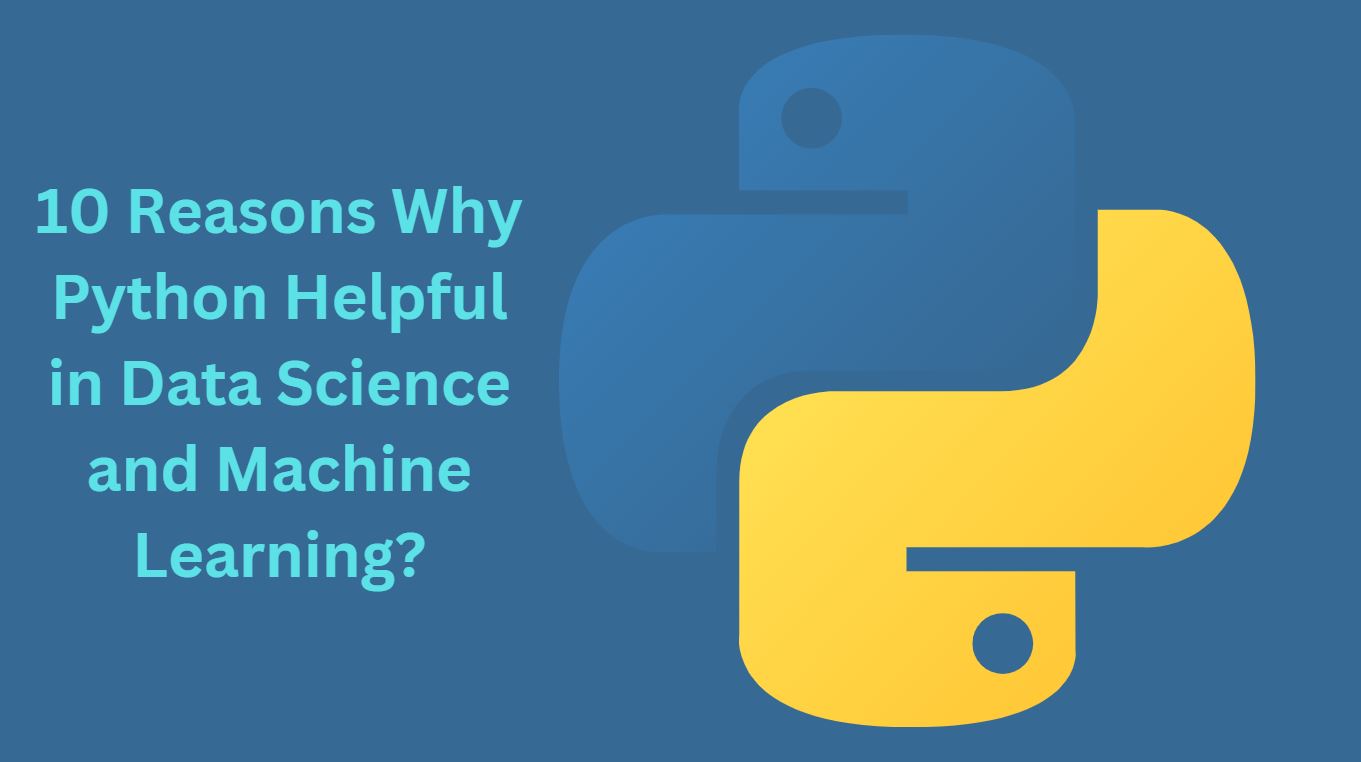10 Reasons Why Python Helpful in Data Science and Machine Learning?

When we talk about data science and machine learning, first question comes in mind which language is best suited for the data scientist and the answer is one among Python, R and C++. Each language has its pros and cons but Python is placed at the top in the field of Artificial Intelligence and data analysis/machine learning.
In the past, I’ve shared How data science is different from machine learning (article) and Why Python is best language for improving quality analysis of your software? (article) and today I will explain why and how Python is helpful in Data Science and Machine Learning for the beginners.
Python is a versatile open source, object oriented programming language which has emerged as one of the most powerful languages to support analyzing data science, machine learning and artificial intelligence. It comes with user-friendly syntaxes, huge libraries, and active community. Python has revolutionized the way professionals extract insights from data and build intelligent systems.
Python friendliness can be covered in below points-
1. Python has user friendly straightforward syntax
Python’s syntax are very simple straightforward English languages words which is a boon for beginners who wants to make career in data science/machine learning. It uses easy-to-read syntaxes similar to our day to day language, making it less intimidating for newcomers. The reduced learning curve allows aspiring data scientists to focus on concepts rather than syntax complexities.
2. Large and progressive Ecosystem of Python Libraries
Python boasts a rich collection of libraries designed for data science and machine learning capabilities. Libraries like NumPy and Pandas provide robust tools for data manipulation and analysis. Scikit-Learn offers a wide range of machine learning algorithms, simplifying model development. TensorFlow and PyTorch are accessible not only to deep learning enthusiasts but also to researchers and users who can train neural networks.
3. Rapid prototyping for accelerating experimentation
Python’s interactive nature encourages rapid prototyping. Researchers and data scientists can experiment with algorithms and techniques in real-time. This flexibility helps quick iteration and exploration, enhancing the efficiency of the development process.
4. Visualization capabilities which can transform data into insights
Data visualization forms the backbone of data science and is crucial in this field. Python has libraries like Matplotlib and Seaborn that allow professionals to create interesting visualizations that are striking and can provide a clear depiction of the data. Visualization tools such as graphs and visual models help to uncover the patterns, trends and the hidden anomalies within data.
5. Large community and documentation makes it more supportive
One of the advantages that Python enjoys is the exhilarating number of communities built around it for data scientists and machine learning fans. Online forums, tutorials, and open-source projects are just some examples of the resources available that allow you to answer questions and tackle problems. Moreover, the through documentation in Python makes studying process easy and enjoyable.
6. Capability of data cleaning and preprocessing
A significant portion of data science involves cleaning and preprocessing data to ensure accuracy. Python’s libraries offer tools to handle missing values, outliers, and inconsistencies, ensuring a solid foundation for analysis and modeling.
7. Machine Learning – Enabling Intelligent Systems
Python’s machine learning libraries helps professionals to build predictive models and intelligent systems. From classification and regression to clustering and recommendation, Python provides a versatile toolkit for solving a variety of real-world problems.
8. Deep Learning for unleashing Neural networks
The rise of deep learning has transformed various industries. Python’s libraries like TensorFlow and PyTorch enable the creation of complex neural networks that excel in tasks like image recognition, natural language processing etc.
9. Scalability – Adapting to Big Data
Python’s scalability ensures that it can handle large datasets and complex computations. Libraries like Dask and Apache Spark facilitate distributed computing, allowing data scientists to work efficiently with big data.
10. Jupyter Notebook
Jupyter notebook (a web interface to Python) allows you to code and collaborate output with other data scientists using your web browser which is really fantastic. Jupyter notebook is born or developed from IPython, an interactive command line terminal for Python.
Conclusion
Python’s is a versatile and robust programming language with strong and ever evolving ecosystem. These qualities of the Python language has helped in the field of data science and machine learning. The syntaxes of this language are user-friendly. Due to a set of comprehensive libraries and supportive community, Python stands at the top place to extract insights from data, build intelligent systems, and contribute to groundbreaking research. As the field continues to evolve, Python’s role as a driving force in data science and machine learning remains stronger than ever.
Image credit- Canva
Discover more from Newskart
Subscribe to get the latest posts sent to your email.


[…] 10 Reasons Why Python Helpful in Data Science and Machine Learning? […]